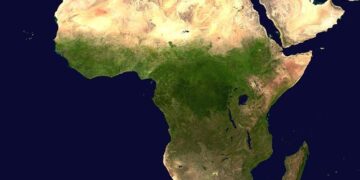Investigating the Potential Implications of Asteroid Collisions
Understanding Asteroid Impact Scenarios
Recent research has drawn attention to the alarming consequences that asteroid collisions could impose on Earth. An analysis from a group of scientists emphasizes the urgency for enhanced preparedness against such cosmic threats. The study outlines various scenarios that delve into how these high-velocity space rocks could affect our planet should they enter Earth’s orbit.
The Nature and Frequency of Asteroids
Asteroids, which predominantly reside within the main belt between Mars and Jupiter, wander into different trajectories that sometimes intersect with Earth’s path. NASA’s Near-Earth Object program currently monitors over 27,000 asteroids to assess potential risks. Notably, estimates suggest that nearly 1,000 larger asteroids—or “potentially hazardous objects”—could cause significant destruction if they were to collide with our planet.
Consequences of Impact: What We Know
The repercussions of an asteroid impact can range from regional devastation to global catastrophe. For instance, a collision event comparable to what caused the extinction of dinosaurs around 66 million years ago is hypothesized to have been triggered by an asteroid approximately 10 kilometers in diameter striking the Yucatán Peninsula in Mexico. Such incidents result not only in immediate destruction but also unleash long-term environmental changes due to atmospheric dust blocking sunlight and disrupting climate patterns.
Current Scientific Findings and Predictions
Recent findings indicate that even smaller asteroids—those measuring a few hundred meters—can still generate catastrophic outcomes if they collide with Earth at high speeds equivalent to tens of thousands of miles per hour. Model simulations reveal potential outcomes like massive tsunamis or widespread fires resulting from atmospheric entry heating.
A specific simulation demonstrated how a hypothetical impact event on New York City by a sizeable asteroid might result in unprecedented casualties and economic losses estimated into trillions—a stark reminder emphasizing why continuous monitoring is crucial.
Implementing Preparedness Strategies
Considering these risks, researchers advocate for strategic measures including implementation plans aimed towards prevention and emergency response systems should an extraterrestrial body pose imminent danger.
Efforts involving international collaboration are essential as countries unite their resources for thorough tracking processes while engaging in research initiatives focusing on deflection technologies—notably kinetic impactors or gravitational tractors tasked with altering an asteroid’s path before it reaches Earth’s trajectory.
Public Awareness and Global Collaboration
To enhance awareness concerning this issue among communities worldwide, outreach programs fostering education about asteroids’ threat should be prioritized within school curriculums alongside community workshops offering insights on emergency preparedness measures during such crises.
Public participation exemplifies grassroots involvement geared towards upgrading planetary defense mechanisms—an initiative anticipated not just nationally but globally as humanity recognizes its shared responsibility toward safeguarding life on Earth against celestial hazards.
Conclusion: A Call for Vigilance
As research continues uncovering extensive data related to alternative impacts stemming from orbital interactions between celestial bodies, recognizing our vulnerability becomes paramount. This understanding translates directly into fostering more resilient infrastructures equipped to withstand unexpected events or natural catastrophes resulting from cosmic impacts—a commitment worthy considering the stakes involved when facing nature’s unpredictability emanating beyond our atmosphere.































